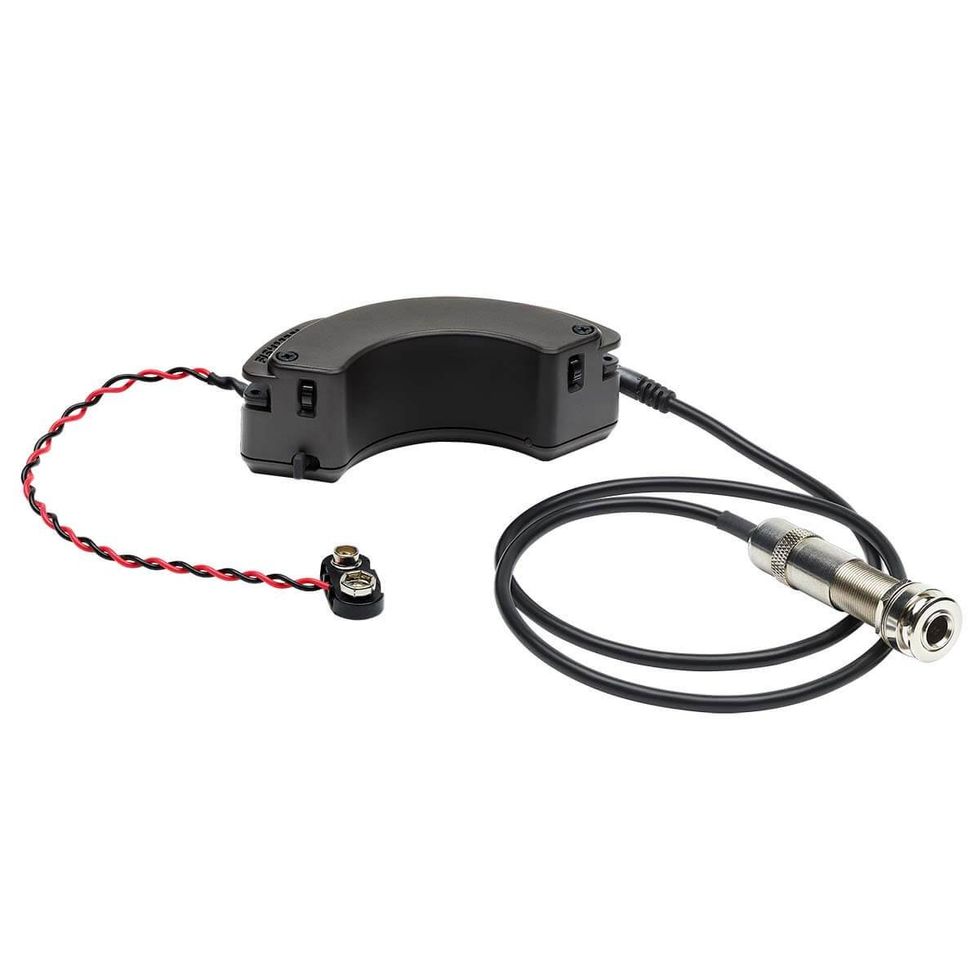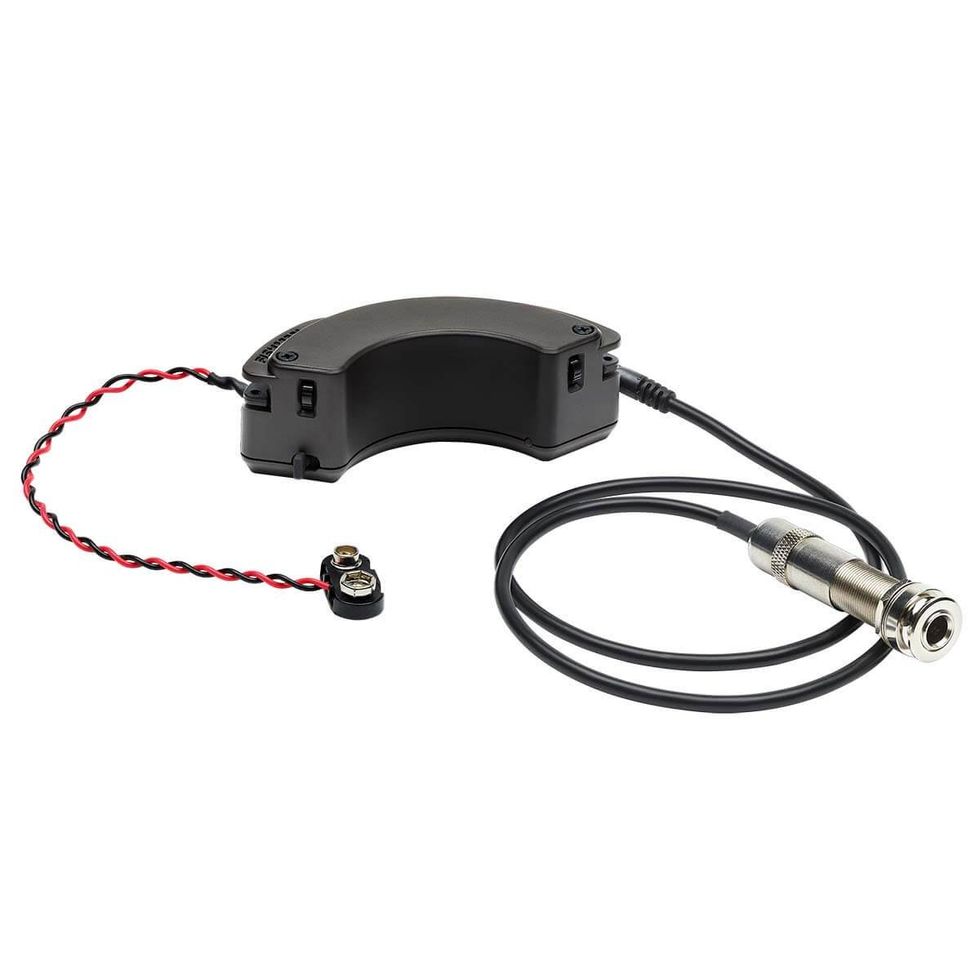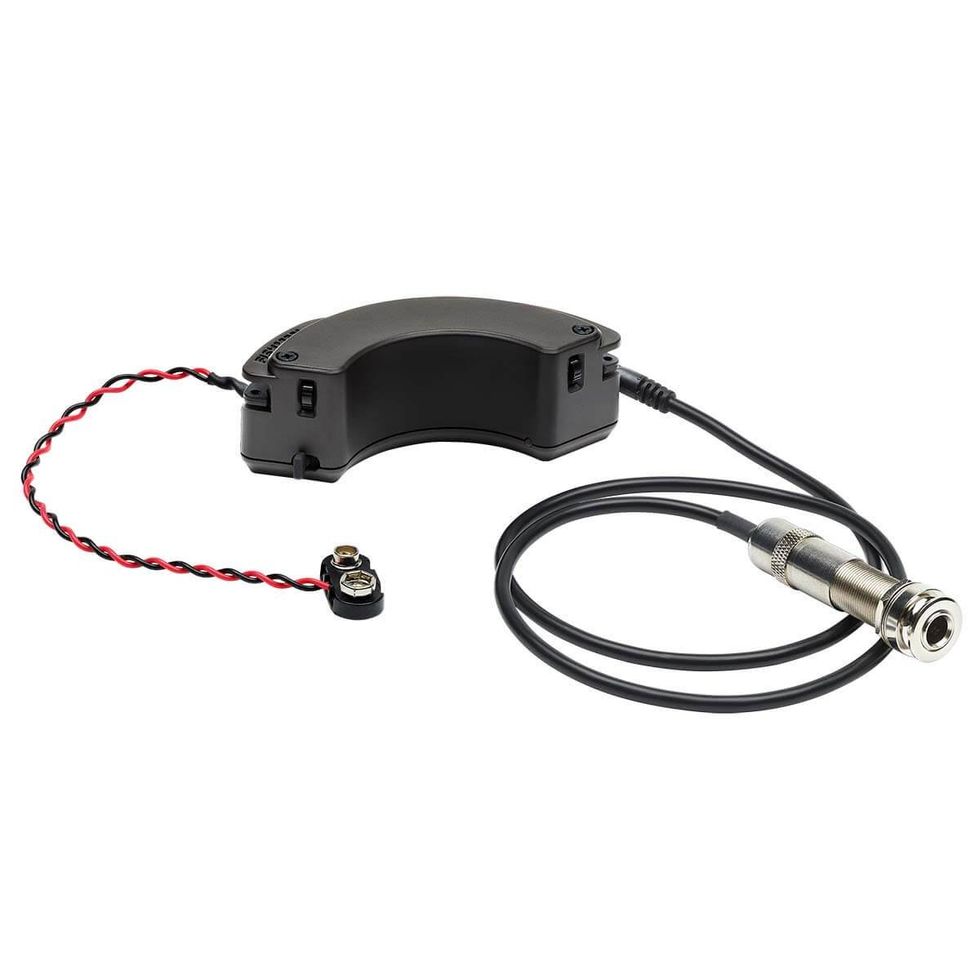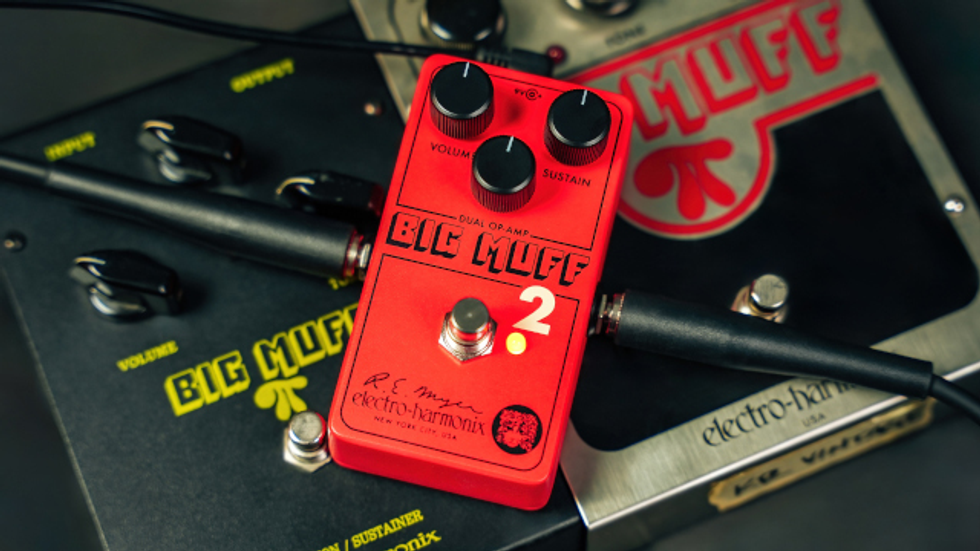BOSS ME-50 Multi-effects pedal $295
Fulltone OCD pedal $150
Klon Centaur $344
DigiTech Eric Clapton Crossroads $100
Having a road case that can manage, power and protect your pedals… Priceless!
Ultimate Board?
High-end pedalboards aren’t for everyone but if your idea of "priceless" involves keeping your MasterCard in your wallet rather than the checkout swiper at your local music store each time you damage a pedal, SKB’s new stagefive professional pedalboard might be worth checking out.
It’s about time someone combined all the features of a well-designed pedal board, a road-worthy case and a versatile power system with useful electronic extras to give guitarists everything they might need in one product. The stagefive offers true stereo outs (with two effects loops), an easy-to-use cable management system and a smorgasbord of built-in power: two jacks at 9 VAC (1.3 amp), two variable DC jacks at 4-12 V, four jacks for standard 9 VDC, an 18 VDC jack, a 24 VDC jack, and two 9 or 12 VDC jacks. It also has a headphone amp, a buffered line power amp for long cable runs and a cord tester. Oh, and don’t forget the million mile guaranty for the case (no, there is no built-in odometer – 1,000,000 miles basically means a lifetime) and the five year guaranty on the electronics. Let there be no doubt: this pedalboard aims to please.
Getting Grounded
Let’s be clear about something from the start -- just as our taste for tone varies from player to player, so do our rigs and our needs in the stage and studio. For a single pedalboard to solve a range of problems among different guitarists is a tall order to begin with. There are some old and boutique pedals out there requiring some not-so-common voltages and no single pedalboard can offer all of them feasibly. Also, if you build enough high-end features into a pedal board, like a custom transformer with separate output windings for complete circuit isolation or switchable 115/230 VAC for international power options, which are both built into the stagefive, some people will start complaining about the extra weight. There is no one-size-fits-all, perfect pedalboard.
That being said, for this review, I’ll describe how the stagefive met my particular needs and expectations, which I think cover a decent range of common and not-so common demands. I’ll also share some perspectives that I gathered from professionals who checked it out at County Q, one of Nashville’s busiest songwriter session studios.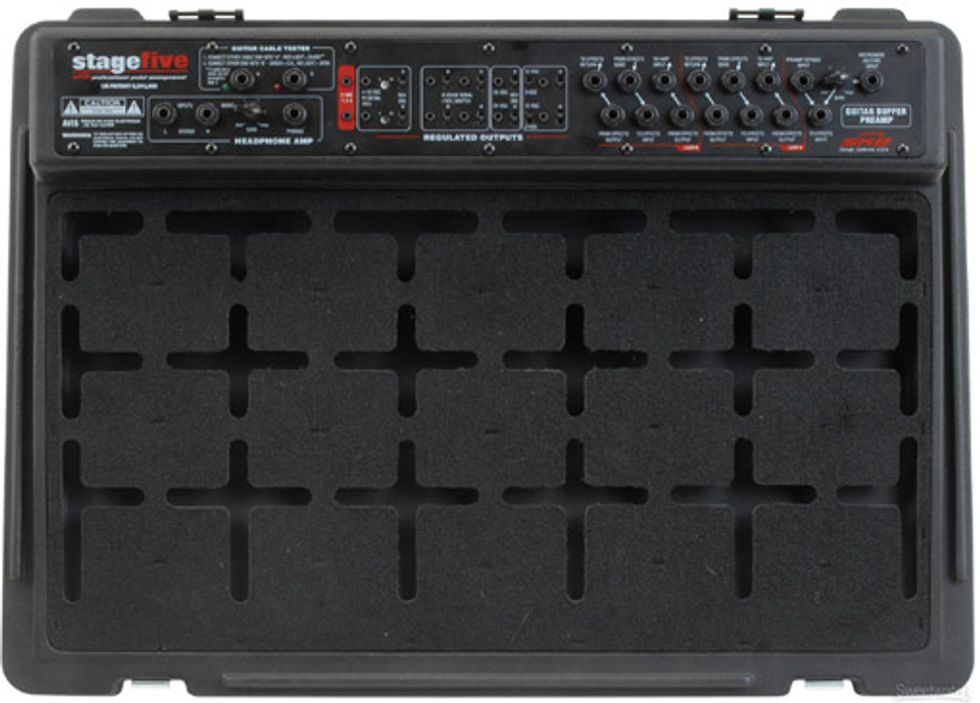
First Look
This board is a bit large for most of the stages I play. It’s 29" x 20.5" and weighs about 22 lbs. It’s rugged, yet nice – with mini- flight locks and a comfortable, sturdy handle. The mere sight of it makes you think of the pros on tour with big name acts who would surely get the full benefit of its durable, spacious design.
Setup
I found myself double-checking amperage requirements for my pedals, even going online for the info when I couldn’t find an owner’s manual. The last thing I wanted to do was fry a pedal by plugging one into an ill-suited power source. I was particularly pleased that the pedalboard included two 9 V 1.3 amp VAC jacks because I’m a Line 6 user. More on that later.

Powering everything up was easy. Routing was, too. The stagefive features plenty of holes for tucking away loose power cords and cable slack.
It was nice to have options while rigging my line out. The stagefive has true stereo channel 1/4" outs with send and return circuits. Too bad the two smaller Fender amps I like to gig with, a ’68 drip edge Princeton Reverb and an early ‘70s Princeton, aren’t equipped for loops. However, I tested the loops with a mid-eighties Fender concert and they worked like a charm.
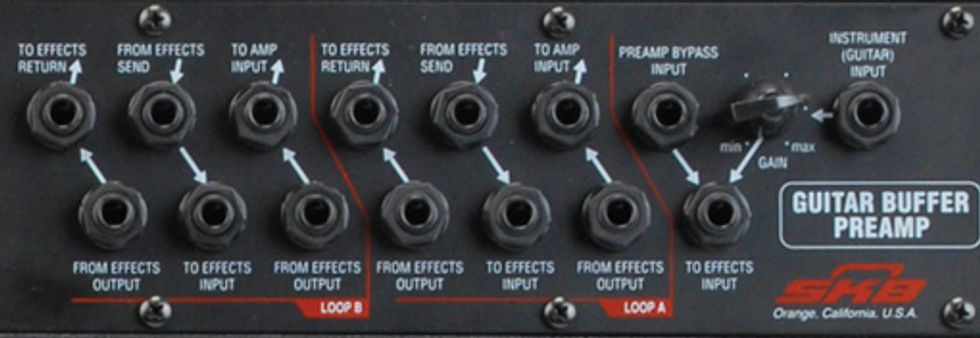
The stagefive gives such a clean, professional look to your rig that it may inspire you to clean up your own act. I found myself soldering custom length patch cables with right angle plugs in order to set everything up as efficiently as possible. It was cool being able to use the board’s built-in cable tester to check my newly soldered connections.
Stage and Studio
The stagefive made life easy when I took it to a gig. After removing the lid it was a matter of plugging the board to an outlet, getting my two outs to amps left and right and then plugging in my guitar. I set all my volumes where I normally play and then checked the volume level of the on-board pre-amp located next to my signal input. It was pretty easy to adjust up and down and get a feel for it.
It’s now clear to me that I’ve been spending too much time on setup with other boards. The stagefive has me playing in one minute after opening the case. The power worries are gone, too. No more changing batteries mid-set. Oh, and no more standing on a mess of cables all night.
The players at County Q were impressed with the stagefive. Overall, their comments reflected that the stagefive would compete with the best products they see going in and out of there every day. Some ideas for improvements included VCA volume control and even AC outlets for those pedals with wacky juice requirements. I brought the AC outlet idea to the attention of SKB’s product development people and were told that the idea was considered. However, because the board was built for pros, it was wired for international use (115/230 VAC) and thus, incorporating a standard US AC outlet into the design didn’t seem feasible. After all, the board has to be plugged in anyway; it’s just as easy to plug a strip into the same spot.
The majority of players out there are probably fine with the stagefive’s myriad voltage and amp settings but I have a Line 6 guitar in my arsenal and found out at a gig that the board’s 9 VAC power meant for Line 6 pedals pushes 1.3 amps, which is fine for Line 6 pedals but not enough for my Variax’ power supply, which needs 9 volts at 2 amps. It managed to work when I tested it in my garage but the gig venue’s power system was obviously stretched thin by lights and God-only-knows what else. The stagefive’s best-in-the-market offering of built-in power is impressive, but depending on your rig there may be situations where a powerstrip and a piece of equipment’s factory-issued power supply are worth taking along.
Final Output
Summed up, the SKB stagefive did a great job of protecting my pedals and supplying the voltages it was meant to supply. The electronics are solid and extra goodies like true stereo circuits and a cord tester go a long way in such a crowded market. Nice touches are everywhere on this board. Even the handle is bigger than you''d expect, allowing you to grab one side or the other to compensate for weight once the board is fully loaded. SKB’s trademark utility, being tougher than nails yet streamlined for professional use, goes without saying. Ultimately, your own rig’s special needs are going to determine whether or not this board is indeed priceless, but it’s safe to say there’s a good chance it’ll have you covered. There is no perfect pedalboard, obviously, but SKB’s stagefive may be the most comprehensive attempt to build one that you’ll come across.
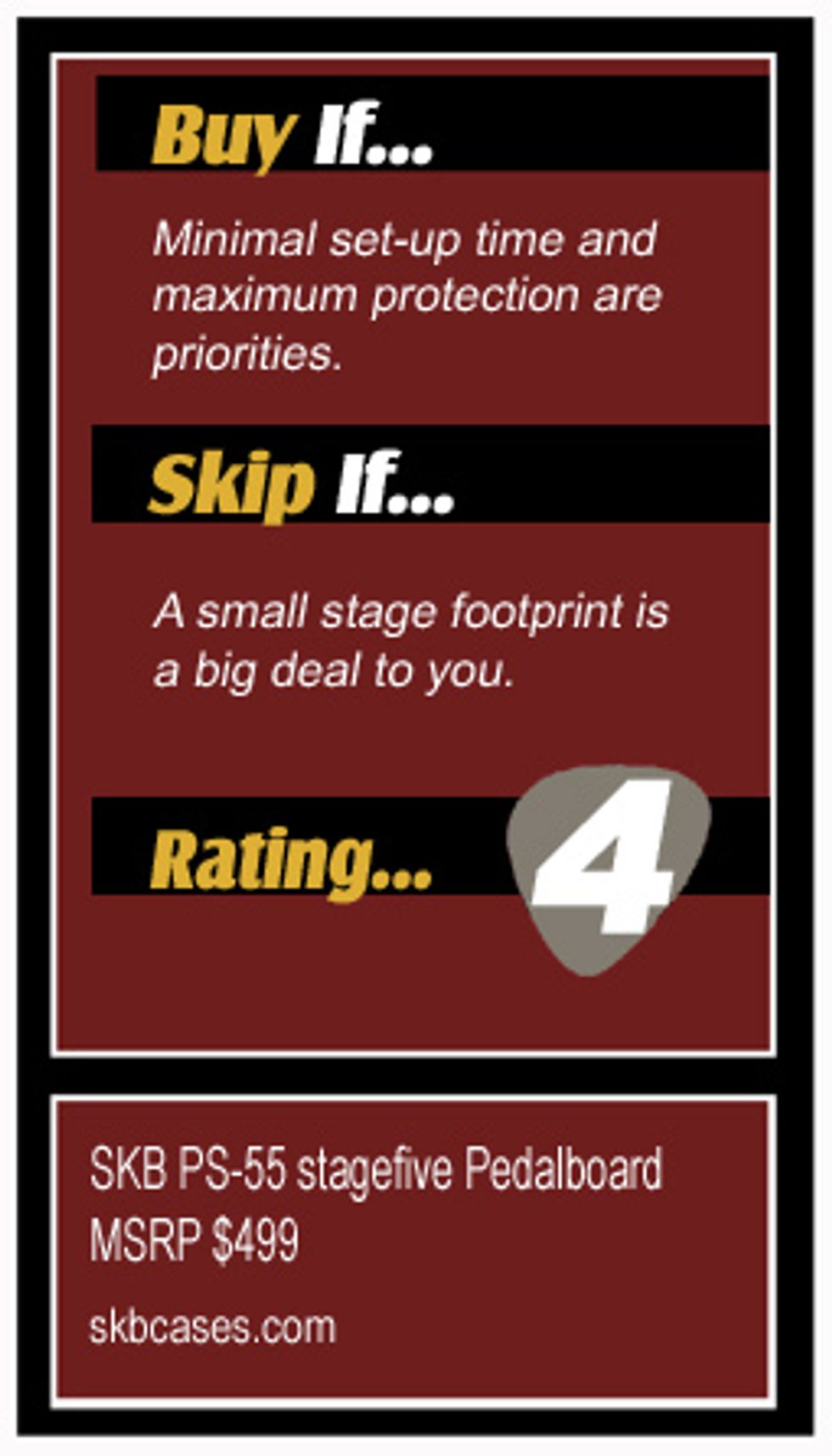
Our expert has stated his case, now we want to hear yours. Share your comments and ratings below.










![Rig Rundown: Russian Circles’ Mike Sullivan [2025]](https://www.premierguitar.com/media-library/youtube.jpg?id=62303631&width=1245&height=700&quality=70&coordinates=0%2C0%2C0%2C0)




